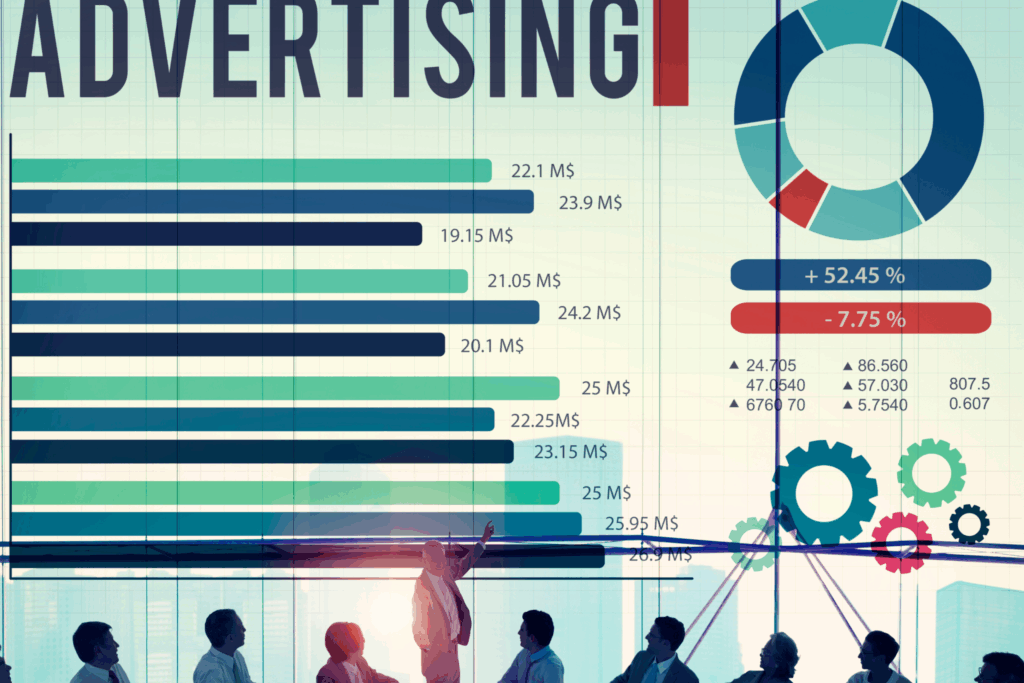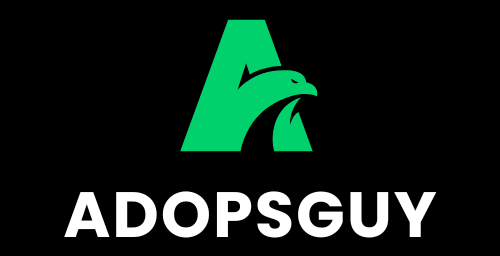Role of AI in Modern Ad Operations

Role of AI in Modern Ad Operations The Role of AI in Modern Ad Operations: Transforming the Digital Advertising Landscape Artificial Intelligence (AI) is revolutionizing many industries, and digital advertising is no exception. As the ad tech landscape continues to evolve, AI plays a crucial role in automating processes, improving ad performance, and optimizing revenue. This shift towards AI-driven solutions is not just about making tasks easier but also about transforming how advertisers and publishers operate in an increasingly data-driven world. 01. AI-Powered Automation One of the most significant impacts of AI in ad operations is automation. Tasks that were once time-consuming, like ad trafficking, reporting, and optimization, are now handled efficiently through AI. For instance, AI algorithms can automatically adjust bids in real-time during programmatic advertising, ensuring advertisers get the best value for their budgets while maximizing reach. 02. Personalized Advertising AI enables brands to deliver highly personalized ads to their audiences. By analyzing user behavior, preferences, and past interactions, AI can create customized ads that resonate with individuals. This level of personalization not only increases engagement but also improves conversion rates. Advertisers can now tailor messages, visuals, and even ad formats based on real-time data, ensuring the right content reaches the right audience. 03. Real-Time Analytics and Insights In modern ad operations, data is everything. AI helps sift through massive amounts of data to provide actionable insights quickly. With AI-powered analytics, advertisers and publishers can track campaign performance in real time, make data-driven decisions, and optimize their strategies. This level of intelligence allows brands to respond instantly to changing market conditions, ensuring maximum ad efficiency and effectiveness. 04. Fraud Detection and Prevention: Ad fraud is a persistent issue in the digital advertising space. AI has become a critical tool in detecting and preventing fraudulent activities, such as click fraud, bot traffic, and domain spoofing. By analyzing patterns and anomalies in traffic and engagement, AI can identify fraudulent behavior and take immediate action to prevent it. This not only protects advertisers’ budgets but also ensures that genuine users are engaging with their ads 05. Enhancing Yield Optimization For publishers, yield optimization is essential to maximizing revenue from ad inventory. AI algorithms can predict the value of ad impressions, analyze audience segments, and recommend the best-performing ad formats. By using AI to optimize yield, publishers can ensure that they are delivering the most relevant ads to users while increasing their overall earnings. 06. The Future of AI in Ad Operations As AI continues to evolve, its role in ad operations will only expand. From predictive analytics to AI-driven creative generation, the future holds endless possibilities for how AI will transform digital advertising. Companies that embrace AI early will likely have a competitive advantage, driving more efficient, personalized, and profitable ad operations. Conclusion In conclusion, AI is not just enhancing ad operations; it is redefining the entire landscape. As we move into the future, the integration of AI into digital advertising will continue to unlock new opportunities for both advertisers and publishers, helping them stay ahead in a rapidly changing environment. At AdOpsGuy, we’re committed to leveraging AI to provide cutting-edge solutions that deliver results. Share Post On Releted Post The Impact of 5G on Digital Advertising The Impact of 5G on Digital Advertising The Impact of… Exploring Contextual Targeting Exploring Contextual Targeting Exploring Contextual Targeting: The Future of Ad… Load More Tags Ad Placement Tips Ad Revenue Growth Ad Network Strategy Website Performance Get In Touch With Us We’d love to hear from you! At Adopsguy, we’re committed to providing exceptional support and answering any questions you may have. Get Started
The Psychology of Color in Advertising

The Psychology of Color in Advertising The Psychology of Color in Advertising Color plays a crucial role in advertising, influencing how consumers perceive a brand and make purchasing decisions. The psychology of color is a powerful tool that marketers use to evoke emotions, convey messages, and create memorable brand identities. 01. Red: Energy and Urgency Red is often associated with passion, excitement, and urgency. In advertising, it grabs attention and creates a sense of action, which is why it’s commonly used in clearance sales, limited-time offers, and call-to-action buttons. Brands like Coca-Cola and Target use red to evoke excitement and stimulate consumer activity. 02. Blue: Trust and Dependability Blue conveys trust, reliability, and calmness, making it a favorite for industries like finance, healthcare, and technology. Companies like IBM, Visa, and Facebook use blue to create a sense of security and stability, reassuring customers that they are making safe, dependable choices. 03.Green: Growth and Health Green symbolizes nature, growth, and health, making it popular for eco-friendly brands, health products, and financial institutions. Brands like Whole Foods and Tropicana use green to connect with themes of sustainability and wellness, while also promoting relaxation and balance. 04. Yellow: Happiness and Optimism Yellow is associated with cheerfulness, warmth, and optimism. It’s a color that grabs attention but in a friendly, inviting way. Brands like McDonald’s and IKEA use yellow to evoke positive, happy emotions and create an inviting atmosphere, making customers feel welcome. 05. Black: Sophistication and Luxury Black is often linked with sophistication, luxury, and elegance. High-end brands like Chanel, Louis Vuitton, and Apple use black to create a sense of exclusivity and refinement. It communicates authority and timelessness, appealing to consumers looking for premium products. 06.Orange: Fun and Enthusiasm Orange combines the energy of red and the cheerfulness of yellow, making it an attention-grabbing and fun color. It’s often used by brands like Nickelodeon and Fanta to promote excitement, creativity, and enthusiasm, particularly among younger audiences. 06.Purple: Creativity and Royalty Purple has long been associated with royalty, creativity, and wisdom. It’s commonly used in beauty and luxury brands to convey a sense of exclusivity and indulgence. Brands like Hallmark and Cadbury use purple to suggest high quality and a premium experience. How Colors Affect Buying BehaviorColor affects how consumers feel about a product, often without them realizing it. Studies show that people make subconscious judgments about products within 90 seconds of viewing them, and up to 90% of that assessment is based on color alone. Choosing the right color palette can make a brand stand out, create emotional connections, and even influence purchasing decisions. Conclusion Understanding the psychology of color in advertising is essential for building strong, effective brand campaigns. Whether a brand wants to inspire trust, excitement, or luxury, the right color choice can make all the difference in how it is perceived by its audience. Share Post On Releted Post The Impact of 5G on Digital Advertising The Impact of 5G on Digital Advertising The Impact of… Exploring Contextual Targeting Exploring Contextual Targeting Exploring Contextual Targeting: The Future of Ad… Load More Tags Ad Placement Tips Ad Revenue Growth Ad Network Strategy Website Performance Get In Touch With Us We’d love to hear from you! At Adopsguy, we’re committed to providing exceptional support and answering any questions you may have. Get Started
Role of Emotional Appeal in Advertising

Role of Emotional Appeal in Advertising Understanding the Role of Emotional Appeal in Advertising Emotions play a powerful role in shaping human behavior, and advertisers have long understood the value of connecting with audiences on an emotional level. Whether it’s joy, nostalgia, fear, or excitement, tapping into emotions can make an advertisement more memorable and effective. This article explores the role of emotional appeal in advertising and why it’s such a vital part of successful campaigns. Why Emotional Appeal Works At its core, advertising is about persuasion. But rather than just presenting facts and features, the most effective ads aim to evoke emotions that resonate with the audience. Here’s why emotional appeal works: 01. Emotions Drive Decision-Making Research shows that consumers often make decisions based on emotions rather than logic. People tend to justify their choices with facts, but emotions usually guide the initial decision. When ads appeal to our emotions, they can influence our buying behavior without us even realizing it. 02. Memorability Ads that make us feel something—whether happiness, sadness, or surprise—are far more memorable than ads that are purely informational. This is because emotional responses trigger the release of chemicals in the brain, which help create stronger memories. 03. Brand Loyalty Brands that consistently connect with consumers on an emotional level are more likely to build long-term loyalty. When a brand makes a consumer feel good, that positive association strengthens over time, making the consumer more likely to choose that brand again. Examples of Emotional Appeal in Advertising Let’s take a look at some famous examples of emotional appeal in advertising: 01. Always’ “Like a Girl” Campaign This campaign tackled the stereotype of doing something “like a girl” and transformed it into a message of empowerment. It struck an emotional chord with both men and women by challenging gender norms and promoting confidence. The ad wasn’t just about selling a product; it was about sparking a conversation, making it emotionally impactful and memorable. 02. Budweiser’s Super Bowl Ads Budweiser’s commercials, especially during the Super Bowl, are well-known for their use of emotional storytelling. Many feature the bond between animals and humans, like the iconic Clydesdale horse and puppy friendship. These ads are designed to evoke warmth and affection, creating a strong emotional connection with the audience. Types of Emotional Appeals in Advertising Advertisers use a variety of emotions to connect with audiences, including: 01. Happiness Ads that evoke joy or laughter create a positive association with the brand. Coca-Cola, as mentioned earlier, often uses happiness as a central theme in their ads. 02. Fear Fear-based advertising highlights potential risks or dangers to encourage action. Many public service announcements (PSAs) use fear to raise awareness about issues like smoking, drunk driving, or climate change 03. Sadness Emotional ads that evoke sadness often tell heartfelt stories that connect deeply with the audience. Charities and non-profits often use this approach to inspire empathy and donations. 04. Surprise Ads that surprise the audience with a twist can leave a lasting impression. Unexpected or unconventional ads make people think and can spark conversations, increasing brand visibility. Balancing Emotion and Information While emotional appeal is a powerful tool, it’s important for advertisers to strike the right balance between emotion and information. Too much emotion without relevant information about the product can leave the audience entertained but not persuaded to buy. On the other hand, too much information without emotional engagement can make the ad feel flat or boring. The best ads often use emotions as an entry point to grab attention and create a connection, followed by enough information to justify the purchase. This balance helps ensure that the audience remembers the ad, feels something, and has a reason to take action. Conclusion Emotional appeal in advertising is a critical component of successful marketing campaigns. By connecting with consumers on a personal level, brands can create lasting memories, build loyalty, and influence buying decisions. Whether it’s joy, fear, or surprise, emotions are at the heart of why certain ads resonate more deeply than others. When done well, emotional advertising not only helps sell products but also builds a strong, lasting connection between the brand and its audience. Share Post On Releted Post The Impact of 5G on Digital Advertising The Impact of 5G on Digital Advertising The Impact of… Exploring Contextual Targeting Exploring Contextual Targeting Exploring Contextual Targeting: The Future of Ad… Load More Tags Ad Placement Tips Ad Revenue Growth Ad Network Strategy Website Performance Get In Touch With Us We’d love to hear from you! At Adopsguy, we’re committed to providing exceptional support and answering any questions you may have. Get Started
Difficulty of Measuring Campaign Success

Difficulty of Measuring Campaign Success The Difficulty of Measuring Campaign Success Measuring the success of advertising campaigns has always been a complex challenge. With the evolution of media and technology, the ways to assess campaign effectiveness have also evolved. This complexity is evident when examining campaigns like Nike’s collaboration with Michael Jordan, where the impact was significant but not immediately measurable. Let’s explore why measuring advertising success is difficult and how approaches have changed over time. Early Advertising Metrics: Sales and Reach:In the early days of advertising, success was often measured using straightforward metrics like sales figures and reach. For example: Sales Metrics: The primary measure of an ad’s success was the increase in sales that followed its release. If a campaign led to a noticeable boost in product sales, it was considered successful. Reach Metrics:Advertisers tracked how many people saw or heard the ad, whether through print, radio, or TV. High reach was often equated with effectiveness, assuming that more exposure would translate into more sales. These methods were relatively simple but lacked depth in understanding how different elements of the campaign influenced consumer behavior. Challenges with Modern Measurement Models Complex Consumer Journeys:Today’s consumers interact with brands across multiple touchpoints—social media, websites, email, and more. Tracking these interactions and understanding their influence on purchase decisions is complex. Attribution Models:Attribution models attempt to assign credit to different touchpoints in a consumer’s journey. Models range from simple last-click attribution to more complex multi-touch attribution. Each model has its strengths and limitations, making it challenging to determine the exact contribution of each touchpoint. Long-Term vs. Short-Term Impact:Some campaigns, like Nike’s with Michael Jordan, have long-term effects that are not immediately visible. The success of such campaigns might take years to fully manifest, complicating the measurement of their immediate impact. Evolution of Measurement Tools To address these challenges, the advertising industry has developed more advanced tools and methods: Data Analytics::Modern analytics tools provide in-depth insights into consumer behavior and campaign performance. These tools can track interactions across different channels and provide a more comprehensive view of campaign effectiveness. A/B Testing:A/B testing allows advertisers to compare different versions of an ad to determine which performs better. This method provides valuable insights into what works and what doesn’t. Customer Surveys and Feedback::Gathering direct feedback from customers can help measure the impact of a campaign on brand perception and consumer attitudes. Example: Nike’s Michael Jordan Campaign Nike’s campaign with Michael Jordan is a prime example of how measuring success can be challenging. While the immediate impact of the campaign on sales was significant, its long-term success—establishing Jordan as a global icon and making Air Jordans a cultural phenomenon—was not immediately measurable. Over time, the campaign proved to be highly successful, but initial metrics alone might not have fully captured its impact. The Role of Qualitative InsightsIn addition to quantitative data, qualitative insights play a crucial role in measuring campaign success. Understanding consumer sentiment, brand perception, and emotional engagement provides a deeper understanding of how a campaign resonates with its audience. Conclusion Storytelling in advertising isn’t just about making ads more interesting—it’s about creating a connection with your audience. By using stories, you can capture attention, build emotional bonds, make complex ideas clear, stand out from the competition, inspire action, and encourage loyalty. In a world full of ads, storytelling helps your brand make a meaningful impact. Share Post On Releted Post The Impact of 5G on Digital Advertising The Impact of 5G on Digital Advertising The Impact of… Exploring Contextual Targeting Exploring Contextual Targeting Exploring Contextual Targeting: The Future of Ad… Load More Tags Ad Placement Tips Ad Revenue Growth Ad Network Strategy Website Performance Get In Touch With Us We’d love to hear from you! At Adopsguy, we’re committed to providing exceptional support and answering any questions you may have. Get Started
Evolution of Advertising

Evolution of Advertising Evolution of Advertising: Key Historical Milestones Advertising has been an essential part of businesses for centuries, shaping consumer behavior and driving economic growth. Let’s explore some of the key historical milestones that have transformed advertising into the dynamic and powerful tool it is today. 01. The Early Days of Print Advertising (15th-17th Century) The first significant development in advertising came with the invention of the printing press by Johannes Gutenberg in the 15th century. This made mass communication possible, leading to the creation of the first printed advertisements in Europe. Early print ads were mainly focused on announcing goods for sale, such as books or services like barbers or blacksmiths. Best for: High-traffic areas like sidebars or headers. 02. Rise of Newspaper Advertising (17th-19th Century) By the 17th century, newspapers became a common medium for advertising. The first newspaper ad in the U.S. appeared in 1704, promoting the sale of real estate. As newspapers grew in circulation, businesses began using this platform to reach a wider audience. This period marked the first widespread use of advertising for branding and awareness. 03. The Golden Age of Radio (1920s-1950s) The invention of the radio in the early 20th century opened a new avenue for advertisers. By the 1920s, companies began sponsoring radio shows, using jingles and live endorsements to promote their products. Radio advertising quickly became popular because it allowed advertisers to reach consumers in their homes, creating a personal connection. 04. The Birth of TV Advertising (1950s) Television changed everything. The first official TV commercial aired in 1941 for Bulova watches. During the 1950s, TV became a primary source of entertainment in homes, and advertisers flocked to this new medium. Ads became more visual, and big brands like Coca-Cola, Tide, and Marlboro became household names through clever TV campaigns. 05. The Digital Revolution (1990s-Present) The rise of the internet in the 1990s marked the beginning of the digital advertising era. Banner ads, search engine marketing, and email marketing allowed businesses to target consumers like never before. Google’s AdWords (now Google Ads) launched in 2000, revolutionizing how businesses approached advertising by focusing on user intent. Social media platforms like Facebook, Instagram, and YouTube further transformed digital marketing with highly targeted ads based on user behavior and interests. 06. The Age of Programmatic Advertising (2010s-Present) Programmatic advertising is the automated buying and selling of online advertising using artificial intelligence. It allows for real-time bidding on ad spaces, making advertising more efficient and effective. This technology has enabled advertisers to reach specific audiences with precision, and it continues to evolve with the rise of data-driven and AI-powered ad strategies. Conclusion Advertising has come a long way from simple print ads to complex digital campaigns. Each milestone has contributed to how we communicate and influence consumer behavior today. With the rise of technologies like artificial intelligence, the future of advertising promises even more innovation and precision. Share Post On Releted Post The Impact of 5G on Digital Advertising The Impact of 5G on Digital Advertising The Impact of… Exploring Contextual Targeting Exploring Contextual Targeting Exploring Contextual Targeting: The Future of Ad… Load More Tags Ad Placement Tips Ad Revenue Growth Ad Network Strategy Website Performance Get In Touch With Us We’d love to hear from you! At Adopsguy, we’re committed to providing exceptional support and answering any questions you may have. Get Started
Importance of Storytelling in Advertising

Importance of Storytelling in Advertising The Importance of Storytelling in Advertising In advertising, storytelling is a powerful tool that can make ads more engaging and memorable. Here’s why telling a story in your ads is so important: 01. Grabs Attention With so many ads out there, catching people’s attention is crucial. A good story can stop people from scrolling past and make them want to watch more. Instead of just showing a product, a story makes your ad stand out. 02. Builds Emotional Connections People remember stories better than facts. When you tell a story that touches people’s hearts or makes them feel something, they’re more likely to remember your brand. This emotional connection makes your message stick. 03. Makes Your Brand Relatable Storytelling helps people see your brand as more than just a business. Sharing stories about your values, mission, or customer experiences makes your brand feel more human and relatable. This helps build trust and loyalty. 04. Simplifies Complex Ideas Some products or services can be hard to explain. A story helps simplify these ideas and present them in a way that’s easy to understand. By using a narrative, you make complex information more accessible and interesting. 05. Sets You Apart from Competitors In a crowded market, it’s important to stand out. A unique story can highlight what makes your brand different from others. By sharing your brand’s journey or special qualities, you can show why your brand is unique. 06. Encourages Action A good story can inspire people to take action. Whether you want them to buy something, sign up for a service, or follow your brand, storytelling can motivate them to act. An emotional and engaging story makes people more likely to respond to your call to action. 07. Fosters Brand Loyalty Stories can leave a lasting impression. When people connect with your brand’s story, they’re more likely to stay loyal. A strong story creates a positive image of your brand that people will remember and return to. Conclusion Storytelling in advertising isn’t just about making ads more interesting—it’s about creating a connection with your audience. By using stories, you can capture attention, build emotional bonds, make complex ideas clear, stand out from the competition, inspire action, and encourage loyalty. In a world full of ads, storytelling helps your brand make a meaningful impact. Share Post On Releted Post The Impact of 5G on Digital Advertising The Impact of 5G on Digital Advertising The Impact of… Exploring Contextual Targeting Exploring Contextual Targeting Exploring Contextual Targeting: The Future of Ad… Load More Tags Ad Placement Tips Ad Revenue Growth Ad Network Strategy Website Performance Get In Touch With Us We’d love to hear from you! At Adopsguy, we’re committed to providing exceptional support and answering any questions you may have. Get Started
Social Media Platforms Have Redefined Advertising

Social Media Platforms Have Redefined Advertising How Social Media Platforms Have Redefined Advertising Social media platforms have transformed the advertising landscape, offering brands new ways to connect with their audience. With billions of users worldwide, platforms like Facebook, Instagram, Twitter, and TikTok have shifted how companies engage with consumers and measure success. Here’s how social media has redefined advertising: 01. Targeted Advertising One of the biggest shifts in advertising is the ability to target specific audiences. Social media platforms allow brands to reach users based on their interests, location, behaviors, and demographics. This precise targeting leads to more relevant ads, improving engagement and return on investment (ROI). 02. Real-Time Engagement Unlike traditional advertising, social media enables real-time interaction with consumers. Brands can receive immediate feedback through comments, likes, and shares, allowing them to adjust campaigns on the fly. This two-way communication fosters stronger relationships between companies and their customers. 03. Influencer Marketing The rise of social media influencers has given birth to a new form of advertising. Brands partner with influencers—who have large, dedicated followings—to promote products in an authentic, relatable way. This strategy can boost credibility and trust, especially when influencers align with the brand’s values. 04. Cost-Effective Advertising Social media ads tend to be more cost-effective than traditional media. Small businesses, in particular, benefit from this affordability, as they can create ads with minimal budgets and still reach a broad audience. Platforms like Facebook and Instagram offer flexible pricing, making it accessible for brands of all sizes. 05. User-Generated Content Social media encourages users to create content around a brand, whether through reviews, unboxing videos, or hashtags. This user-generated content serves as organic advertising, boosting brand visibility and credibility. Campaigns that invite audience participation, like contests or challenges, drive engagement and broaden reach. 06.Data-Driven Insights Social media platforms provide advertisers with detailed analytics, enabling brands to track performance and optimize their campaigns. Metrics such as impressions, clicks, engagement rates, and conversions help businesses make data-driven decisions and refine their strategies in real-time. 07. Visual Storytelling Social media thrives on visuals, and platforms like Instagram, Pinterest, and TikTok emphasize the importance of visual storytelling. Brands can use images and videos to craft compelling stories that resonate with their audience. This approach not only captures attention but also builds emotional connections. 07. Shoppable Ads Platforms like Instagram and Facebook have introduced shoppable posts, making it easier for users to purchase directly from ads. This seamless integration between browsing and buying has simplified the consumer journey and increased conversion rates. Conclusion Social media has revolutionized advertising by making it more targeted, interactive, and affordable. It provides brands with tools to engage consumers in real-time, leverage influencer partnerships, and track results with precision. As social media continues to evolve, so will the opportunities for brands to connect with their audience in innovative ways. Share Post On Releted Post The Impact of 5G on Digital Advertising The Impact of 5G on Digital Advertising The Impact of… Exploring Contextual Targeting Exploring Contextual Targeting Exploring Contextual Targeting: The Future of Ad… Load More Tags Ad Placement Tips Ad Revenue Growth Ad Network Strategy Website Performance Get In Touch With Us We’d love to hear from you! At Adopsguy, we’re committed to providing exceptional support and answering any questions you may have. Get Started
Nike and Michael Jordan: A Game-Changing Collaboration

Nike and Michael Jordan: A Game-Changing Collaboration Nike and Michael Jordan: A Game-Changing Collaboration Nike’s collaboration with Michael Jordan in the 1980s transformed the brand and redefined athlete endorsements, making it one of the most successful partnerships in advertising history. 01. Nike’s Risky Bet When Nike signed Michael Jordan in 1984, he was a promising but unproven basketball player. The decision to back a rookie with a signature shoe line was a bold move, especially when bigger names were available. This risk paid off massively, just like Volkswagen’s contrarian “Lemon” campaign. 02. The Birth of Air Jordan The launch of the Air Jordan line in 1985 was revolutionary. Unlike traditional basketball shoes, Air Jordans were bold in design and promoted as part of Jordan’s legacy. This created an emotional connection between fans and the product, similar to how Volkswagen’s Beetle was positioned as more than just a car. 03. Creating Cultural Impact Jordan’s success on the court, combined with Nike’s marketing, turned the Air Jordan brand into a cultural phenomenon. This collaboration didn’t just sell shoes; it became a lifestyle. Nike used Michael Jordan’s global appeal to elevate the brand, a strategy that built loyalty much like Volkswagen’s honest, relatable approach. 04. Innovative Marketing Strategy Nike revolutionized the way sports products were marketed. By tying their brand to Jordan’s growing stardom, they created a narrative that linked personal success with the product. This method of storytelling through an iconic figure, much like Volkswagen’s approach in its “Lemon” campaign, redefined advertising strategies for sports brands. 05.Legacy and Influence The Nike-Jordan collaboration set the standard for athlete endorsements. It proved that aligning a brand with a strong, relatable figure could drive long-term success, mirroring the influence of Volkswagen’s “Lemon” campaign on future ads. This partnership, like Volkswagen’s iconic campaign (linked to “Volkswagen’s ‘Lemon’ Campaign: Revolutionizing Advertising”), played a pivotal role in changing advertising strategies and consumer-brand relationships. Share Post On Releted Post The Impact of 5G on Digital Advertising The Impact of 5G on Digital Advertising The Impact of… Exploring Contextual Targeting Exploring Contextual Targeting Exploring Contextual Targeting: The Future of Ad… Load More Tags Ad Placement Tips Ad Revenue Growth Ad Network Strategy Website Performance Get In Touch With Us We’d love to hear from you! At Adopsguy, we’re committed to providing exceptional support and answering any questions you may have. Get Started
Campaigns that Changed Advertising Forever

Campaigns that Changed Advertising Forever Iconic Campaigns that Changed Advertising Forever Throughout history, certain advertising campaigns have stood out, transforming not only their brands but the entire industry. These campaigns broke the mold, introduced fresh ideas, and left a lasting impact on the way we think about marketing. 01. Volkswagen’s “Lemon” Campaign In the late 1950s, Volkswagen launched its iconic “Lemon” campaign to promote the Beetle. At a time when big cars dominated the market, VW embraced simplicity. The ad humorously called the Beetle a “lemon” (a faulty car) but reassured consumers by emphasizing quality control. This bold, unconventional approach flipped traditional advertising on its head, focusing on honesty and self-awareness, and it worked—VW became a major player in the U.S. market. 02. Nike’s “Just Do It” In 1988, Nike introduced its famous “Just Do It” slogan, changing the face of sports marketing. The simple, yet powerful phrase captured the essence of athletic determination and resonated with a broad audience. The campaign wasn’t just about selling shoes—it inspired people to push their limits, whether they were athletes or not. It transformed Nike from a sports brand to a global symbol of motivation. 03. Apple’s “1984” Super Bowl Ad Apple’s “1984” commercial is often hailed as one of the greatest ads ever. It aired during the Super Bowl and introduced the world to the Macintosh computer. Directed by Ridley Scott, the ad played off George Orwell’s novel 1984, depicting Apple as a rebellious, innovative force in a world of conformity. The ad helped Apple position itself as a revolutionary brand, setting the tone for decades of groundbreaking technology. 04. Coca-Cola’s “Share a Coke” In 2011, Coca-Cola launched its “Share a Coke” campaign, where bottles were personalized with common first names. This simple yet clever idea created a personal connection between the brand and consumers. People began searching for bottles with their names or the names of friends, sharing the experience on social media. The campaign tapped into a sense of personalization and community, boosting Coke’s sales and creating a viral sensation. 05. Old Spice’s “The Man Your Man Could Smell Like” In 2010, Old Spice released a humorous, fast-paced commercial featuring actor Isaiah Mustafa as “The Man Your Man Could Smell Like.” The quirky, attention-grabbing ad flipped the traditional men’s body wash category by appealing to women as the target audience. Its viral success, combined with clever social media engagement, revitalized Old Spice’s brand and set a new standard for digital marketing. Conclusion These campaigns didn’t just promote products—they changed the way brands connect with consumers. By taking risks, tapping into human emotions, and embracing innovative ideas, they left a permanent mark on the advertising landscape, influencing countless campaigns that followed. Share Post On Releted Post The Impact of 5G on Digital Advertising The Impact of 5G on Digital Advertising The Impact of… Exploring Contextual Targeting Exploring Contextual Targeting Exploring Contextual Targeting: The Future of Ad… Load More Tags Ad Placement Tips Ad Revenue Growth Ad Network Strategy Website Performance Get In Touch With Us We’d love to hear from you! At Adopsguy, we’re committed to providing exceptional support and answering any questions you may have. Get Started
Switch from AdSense to AdX

Switch from AdSense to AdX Why Publishers Should Make the Switch from AdSense to AdX If you’re a publisher, you’re probably familiar with Google AdSense—an easy-to-use platform that helps you display ads and earn revenue. Many smaller publishers start with AdSense because of its simplicity. However, as your website grows, sticking with AdSense might limit your earning potential. That’s where Google Ad Exchange (AdX) comes in. Why Switch to AdX? 01. Higher Earnings Potential AdSense serves ads based on a fixed pricing model, but AdX works as a real-time auction, allowing premium advertisers to bid for your ad space. This results in better competition and higher payouts. 02. Access to Premium Advertisers AdX gives you access to top-tier advertisers who are willing to pay more for your audience. You’ll see higher CPMs and an increase in overall ad revenue. 03. Better Customization With AdX, you have much more control over the types of ads that appear on your site, where they’re placed, and how they interact with your users. This flexibility is crucial for delivering a seamless experience to your audience. 04. Advanced Reporting Tools AdX offers in-depth analytics, giving you a clearer picture of your ad performance. You can monitor which advertisers are paying the most, which formats are working best, and where you’re seeing the highest engagement. Share Post On Releted Post The Impact of 5G on Digital Advertising The Impact of 5G on Digital Advertising The Impact of… Exploring Contextual Targeting Exploring Contextual Targeting Exploring Contextual Targeting: The Future of Ad… Load More Tags Ad Placement Tips Ad Revenue Growth Ad Network Strategy Website Performance Get In Touch With Us We’d love to hear from you! At Adopsguy, we’re committed to providing exceptional support and answering any questions you may have. Get Started

